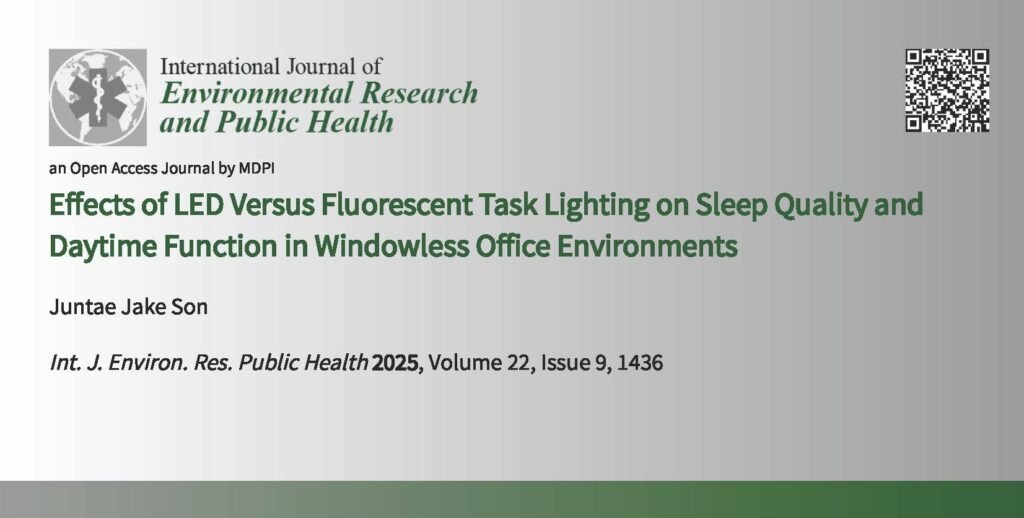
This study investigated the effects of LED versus fluorescent task lighting on sleep quality and daytime functioning among office workers in a windowless environment. Using a within-subjects crossover design with 32 full-time employees, participants were exposed to both 4000 K LED and 4100 K fluorescent lighting conditions over two one-week periods. Subjective sleep quality and alertness were assessed through the Pittsburgh Sleep Quality Index (PSQI) and daily sleep diaries. Results indicated significantly better global sleep quality, improved subjective sleep assessments, and reduced daytime dysfunction under LED lighting conditions. While sleep duration did not significantly differ, a positive trend was observed favoring the LED condition. These outcomes are likely due to differences in spectral power distribution between the two light sources, particularly the continuous, blue-enriched spectrum of the LED lamp, which supports circadian regulation. The findings suggest that biologically supportive lighting—such as continuous-spectrum LEDs—can positively impact sleep and daytime performance, even in the absence of natural daylight. This research contributes to the growing field of circadian lighting and offers practical implications for architects, designers, and workplace managers aiming to enhance employee well-being and productivity in enclosed office environments.








